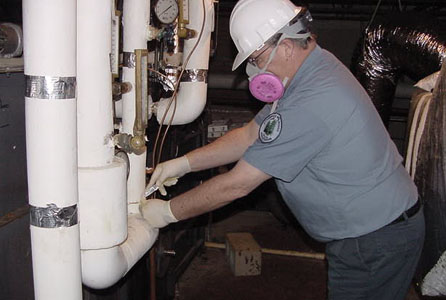
Asbestos Sampling
Asbestos sampling is done by the relevant authority when there is an exposure to asbestos in a particular place. In the US, the EPA, Environment Protection Agency, will conduct the test as well as the sampling. EPA will also oversee the cleaning up process.
Most of the time, there are three types of samples that are collected: samples from the air, dust samples, and soil samples. These samples are taken to check if the air, soil and indoor dust have been contaminated with the asbestos fibres. Once the EPA has this information, a proper plan can be set to facilitate the cleaning process. The samples are important and the sampling is conducted even after the cleaning process to ensure that there are no leftover fibres.
Asbestos Sampling in Air
The air samples are collected using a pump. The workers will be given a carry-on pump and a large pump is also kept in the vicinity. These pumps will have a nozzle that sucks the air. The air is then collected in a cylinder like container. This container is then taken in to be tested for asbestos fibres. The same goes for the large pump. The samples will be collected at the same time.
Asbestos Sampling in Dust
In order to test the dust, a micro - suction is used. The air here is sucked in through a filter. This filter is then sent for testing. They will be able to test the dust particles. From the dust particles one can find out if the fibres are in the dust or not. This way the treatment method will also be different.
Asbestos Sampling in Soil
The soil samples are collected from the gardens, driveways and also the road side. Then the samples will be sent for testing. Taking solid samples will indicate the initial content of asbestos fibres in the vicinity. It will also help with the cleaning up process.
When taking samples, the workers will be provided with protective gear. However since of the gear can be complicated, unfortunately, the workers may not use the protective gear. If there is a risk of the workers being exposed, then they will have no choice but to use the protective gear anyway.
The samples will be tested using a few methods. One of the methods is Scanning Electron Microscopy. This method can identify asbestos fibres and non-asbestos fibres. This method is only used for minerals, which means for soil based samples only.
Polarized Light Microscopy is used for huge samples. It is able to identify asbestos particles and non particles as well. However it is unable to detect asbestos in small concentrations. Which means if there was asbestos in the air of less than 1%, Polarized Light Microscopy method will not be able to detect these particles. It is important to realize that each method of testing identifies different levels of asbestos in the samples.
Taking the samples are important as they will be a certainty that there is no more asbestos in the air. The sampling will also be done over a period of time. This is to ensure that the air is free of the hazardous levels of asbestos fibres.
